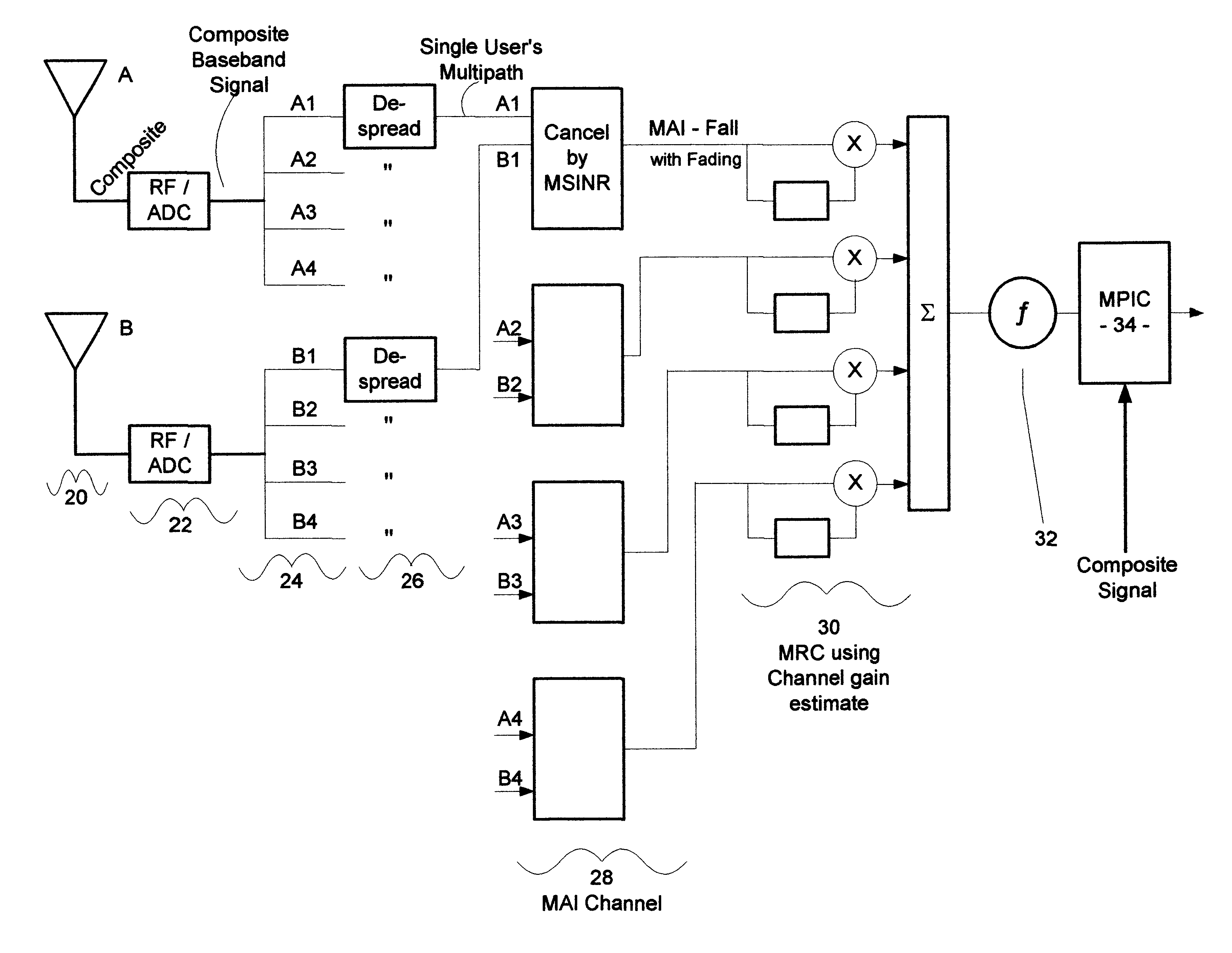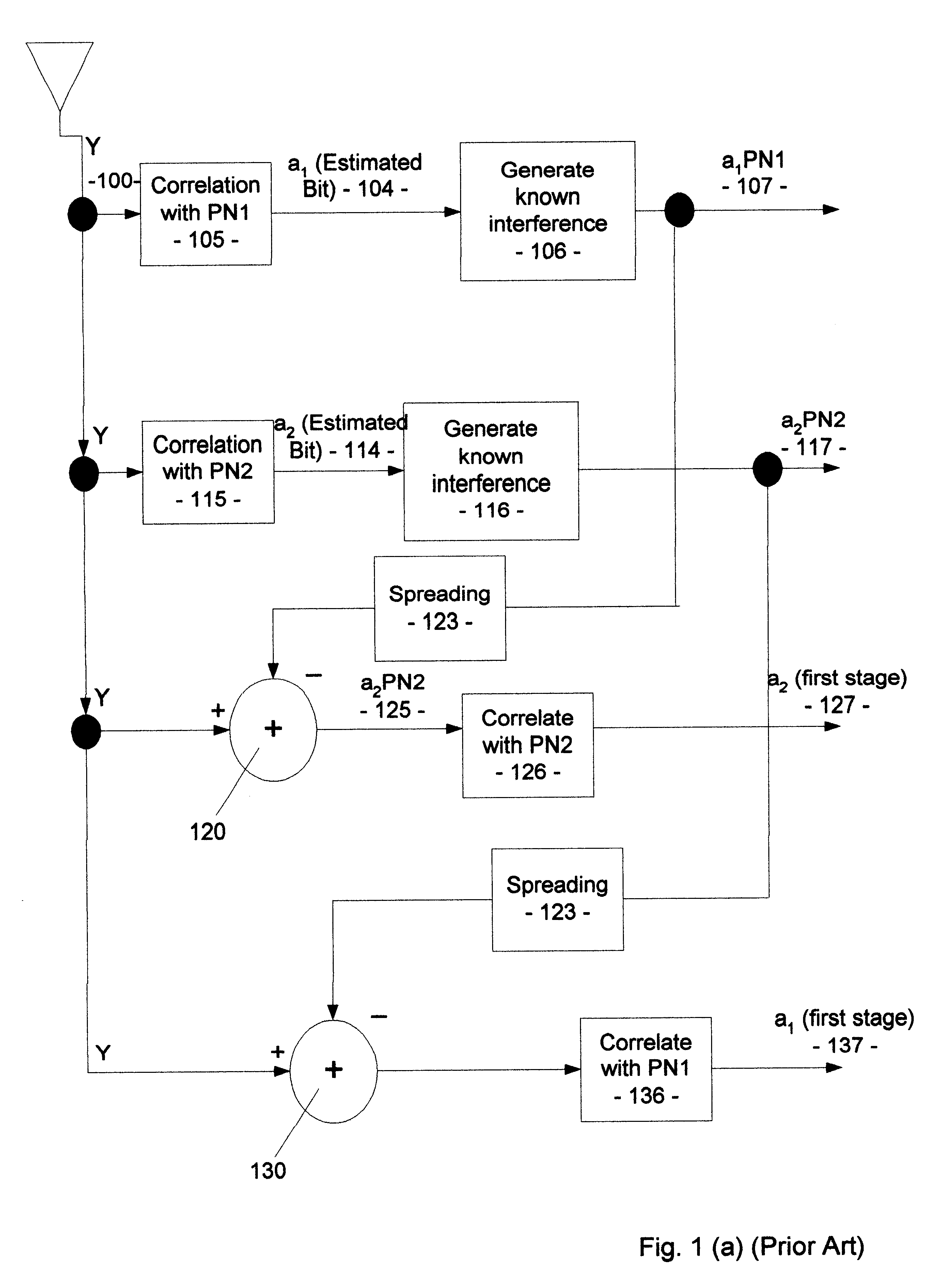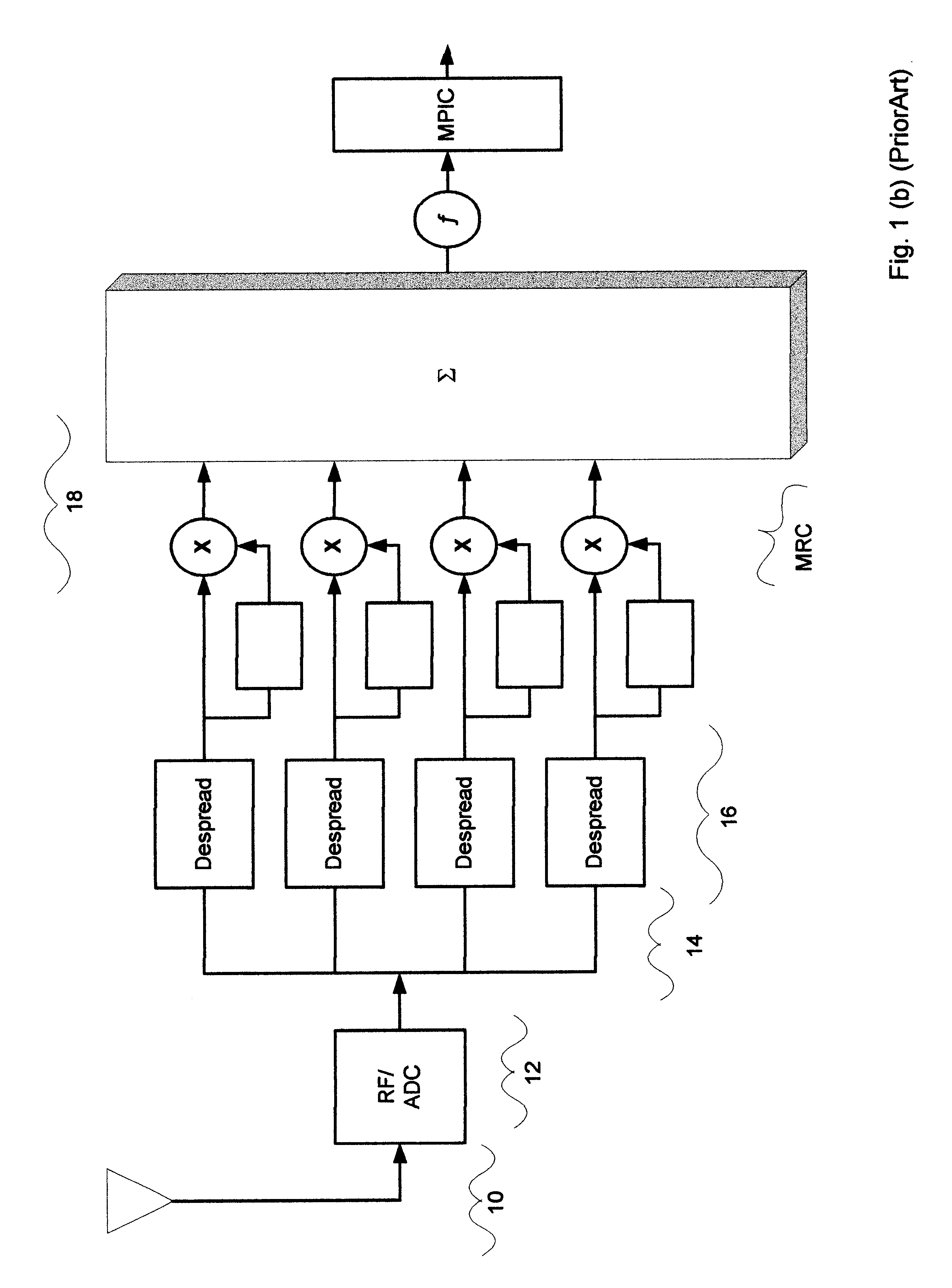Method and system for canceling multiple access interference in CDMA wireless communication system
a wireless communication system and multiple access technology, applied in the field of wireless communication systems, can solve the problems of inability to guarantee the performance of matched filters, still undesirable interference from multiple accesses, and inability to cancel multiple accesses, so as to maximize the signal-to-interference-plus-noise ratio, accurate mai regeneration, and eliminate correlated interference
- Summary
- Abstract
- Description
- Claims
- Application Information
AI Technical Summary
Benefits of technology
Problems solved by technology
Method used
Image
Examples
Embodiment Construction
[0023]A method and system for canceling multiple access interference in CDMA wireless communication system is disclosed. In the following detailed description, numerous specific details are set forth in order to provide a thorough understanding of the present invention. However, it will be apparent to one of ordinary skill in the art that these specific details need not be used to practice the present invention. In other circumstances, well known structures, circuits and interfaces have not been shown or described in detail in order not to unnecessarily obscure the present invention.
[0024]Reference is first turned to FIG. 2(a), where a simplified system diagram of one embodiment of the present invention is shown. The receiver in accordance with the present invention can be implemented with multiple antennas. However, for the sake of description, two antennas are shown in FIG. 2(a). Those skilled in the art can readily expand the number of antennas based on the teaching of the descri...
PUM
 Login to View More
Login to View More Abstract
Description
Claims
Application Information
 Login to View More
Login to View More - R&D
- Intellectual Property
- Life Sciences
- Materials
- Tech Scout
- Unparalleled Data Quality
- Higher Quality Content
- 60% Fewer Hallucinations
Browse by: Latest US Patents, China's latest patents, Technical Efficacy Thesaurus, Application Domain, Technology Topic, Popular Technical Reports.
© 2025 PatSnap. All rights reserved.Legal|Privacy policy|Modern Slavery Act Transparency Statement|Sitemap|About US| Contact US: help@patsnap.com



